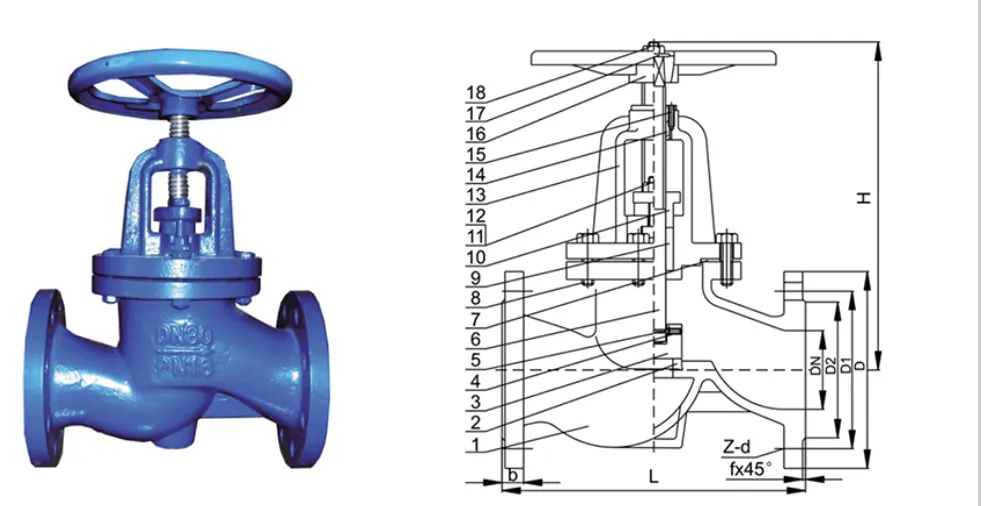12-р сар . 10, 2024 19:46 Back to list
Understanding the Benefits and Functions of Y Strainer Valves in Piping Systems
Understanding Y-Strainer Valves Functionality and Importance
Y-strainer valves are essential components in various piping systems, designed to filter out impurities and debris from liquids and gases. Their unique shape and functionality make them a popular choice in many industrial and municipal applications. In this article, we will explore the working of Y-strainer valves, their types, applications, benefits, and maintenance tips to ensure optimal performance.
What is a Y-Strainer Valve?
A Y-strainer valve is a type of filter that resembles a 'Y' shape, hence its name. It is typically installed in pipelines to prevent contaminants from entering the main system. The valve consists of a body, a strainer element (filter), and a cover. The design allows for easy access to the filter for cleaning and replacement, making Y-strainers convenient for maintenance.
How Does a Y-Strainer Work?
The Y-strainer works by allowing the fluid to flow through the strainer while trapping solid particles in the process. When fluid enters the strainer, it flows through the filter element. The strainer’s mesh blocks the particulates, allowing only clean fluid to pass through to the downstream piping system. Over time, as debris accumulates, the flow rate may decrease, indicating that it's time for maintenance.
Types of Y-Strainer Valves
Y-strainer valves are available in various materials and designs to suit different applications. Common materials include stainless steel, bronze, and plastic, each offering different levels of resistance to corrosion and temperature.
1. Stainless Steel Y-Strainers These are ideal for high-temperature and high-pressure applications due to their durability and resistance to rust and corrosion.
2. Bronze Y-Strainers Often used in water systems, bronze Y-strainers offer good oxidation resistance and are perfect for marine applications.
3. Plastic Y-Strainers Lightweight and resistant to chemicals, plastic Y-strainers are ideal for corrosive fluid applications but are generally limited to low-pressure scenarios.
Applications of Y-Strainer Valves
Y-strainers are employed across various industries, including
- Water Treatment Plants They filter out debris and sediment in the water supply. - Chemical Processing They protect pumps and valves from particles that could cause interference or damage. - Food and Beverage Industry They ensure that the products remain uncontaminated by filtering out unwanted particles. - HVAC Systems In heating and cooling systems, Y-strainers help prevent blockages in the pipes.
y strainer valve

Benefits of Using Y-Strainer Valves
1. Efficient Filtration Y-strainers are highly effective in capturing solid particulates, thus safeguarding the integrity of the piping system.
2. Cost-Effective Maintenance The easy access to the strainer element reduces downtime and labor costs as operators can quickly clean or replace the strainer without extensive disassembly.
3. Versatility Their ability to handle various fluids, including water, oils, and chemicals, makes Y-strainers suitable for numerous applications.
4. Longevity With proper maintenance and selection of material, Y-strainers can offer long service life, making them a reliable choice for filtration needs.
Maintenance of Y-Strainer Valves
To ensure that a Y-strainer valve operates efficiently, regular maintenance is crucial. Here are some tips
1. Routine Inspection Periodically check the strainer for signs of clogging or damage.
2. Cleaning Depending on the level of contamination, clean the filter element regularly to maintain optimal flow rates. This can be done by removing the strainer cover and rinsing the mesh screen.
3. Replacement If the strainer is excessively damaged or corroded, replacing it may be necessary for continued efficiency.
4. Monitoring Keep an eye on pressure gauges upstream and downstream of the strainer to identify any significant pressure drops, indicating that cleaning may be needed.
Conclusion
Y-strainer valves play a vital role in maintaining the efficiency and longevity of various piping systems. By effectively filtering out contaminants, they protect equipment and ensure smooth operation. Understanding their functionality, types, and best maintenance practices can help industries make informed decisions, leading to improved operational reliability and cost savings. As industries continue to evolve, the significance of Y-strainer valves will remain critical in the quest for optimal system performance.
Share
-
Reliable Wafer Type Butterfly Valves for Every IndustryNewsJul.25,2025
-
Reliable Flow Control Begins with the Right Ball Check ValveNewsJul.25,2025
-
Precision Flow Control Starts with Quality ValvesNewsJul.25,2025
-
Industrial Flow Control ReliabilityNewsJul.25,2025
-
Engineered for Efficiency Gate Valves That Power Industrial PerformanceNewsJul.25,2025
-
Empowering Infrastructure Through Quality ManufacturingNewsJul.25,2025